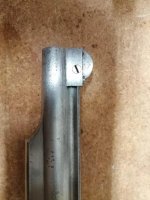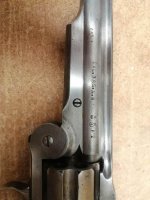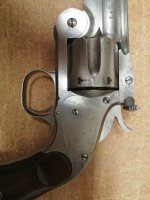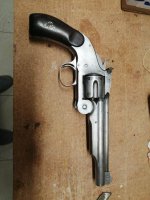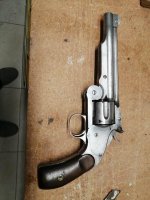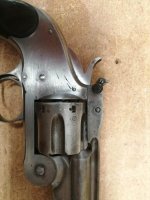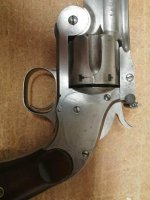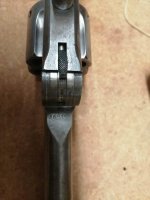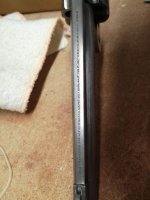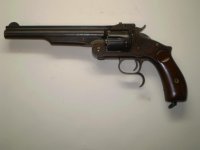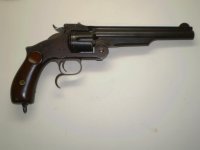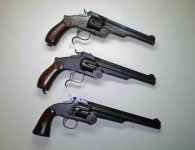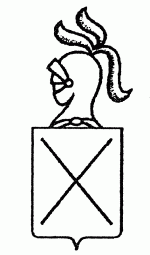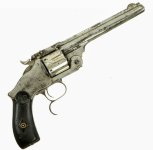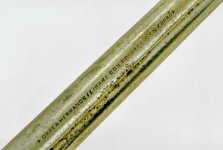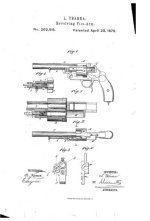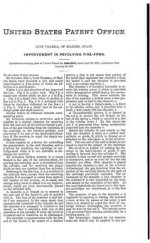Hi, folks!
First, I wanr to apologize for my english. Being spaniard, it's hard to me to use correctly your language.
A friend of mine has been offered what seems to be a S&W Russian comerial, as it can be read in barrel's top.
Per the backstrap without the knuckle, it looks a first model.
But there's some features that are not acknowledged in SCSW:
Caliber: there's no factory caliber marks in the barrel. It's been marked 38 S&W by the spanish proof house.
Rear sight: look like target sights, or regulable ones.
Front sight. It's not pinned, but mounted on a square block, fixed with a screw.
Barrel lenght: its 178mm, 7". looks like it's been chopped off to fit an extension with the weird front sight.
Serial number: in the 66XXX range, and placed under the barrel, near the hinge. I have no pictures of the butt, so i can't tell if there is a stamped serial number.
With all this in mind, has my friend been offered an unusual kind of Russian model, or may we count is an Euskaro copy with a nice fake barrel marking?
Thanks in advance for any info or opinion you can share.
Jordi
First, I wanr to apologize for my english. Being spaniard, it's hard to me to use correctly your language.
A friend of mine has been offered what seems to be a S&W Russian comerial, as it can be read in barrel's top.
Per the backstrap without the knuckle, it looks a first model.
But there's some features that are not acknowledged in SCSW:
Caliber: there's no factory caliber marks in the barrel. It's been marked 38 S&W by the spanish proof house.
Rear sight: look like target sights, or regulable ones.
Front sight. It's not pinned, but mounted on a square block, fixed with a screw.
Barrel lenght: its 178mm, 7". looks like it's been chopped off to fit an extension with the weird front sight.
Serial number: in the 66XXX range, and placed under the barrel, near the hinge. I have no pictures of the butt, so i can't tell if there is a stamped serial number.
With all this in mind, has my friend been offered an unusual kind of Russian model, or may we count is an Euskaro copy with a nice fake barrel marking?
Thanks in advance for any info or opinion you can share.
Jordi
Attachments
Last edited:

